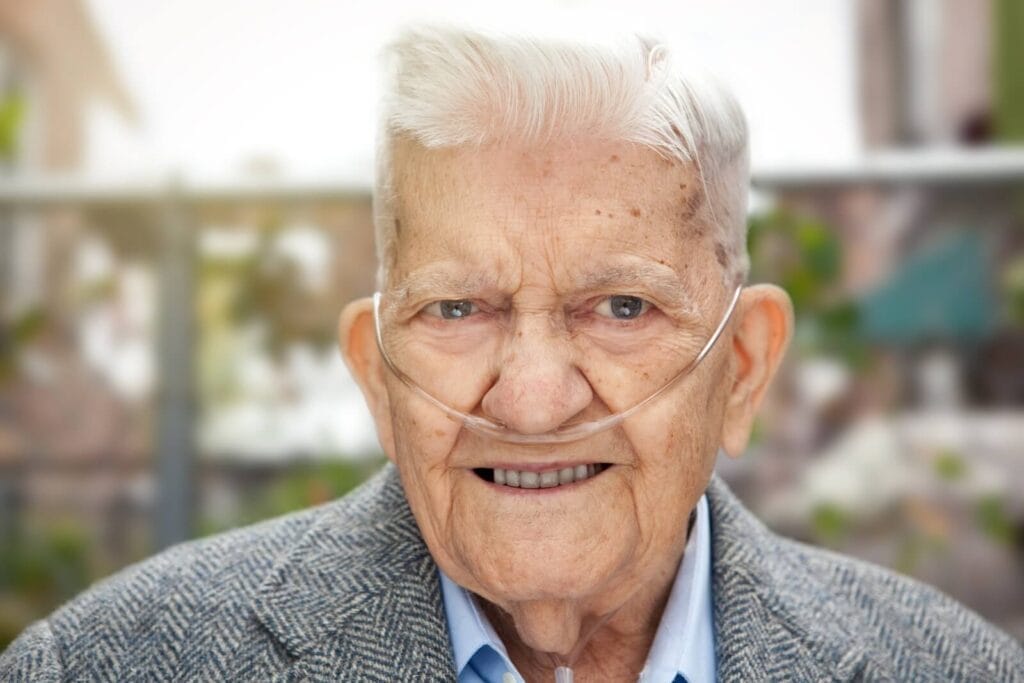
For seniors living at home alone, staying safe and independent while using medical equipment like oxygen concentrators can take some preparation and awareness. Although these devices are more convenient and intuitive to use than ever, there are still a few considerations to keep in mind to stay safe and make the most of them. Whether it’s managing routine maintenance, checking alarms, or recognizing safety concerns, here are some tips to help you take care of yourself and your oxygen concentrator while living at home alone so you can stay safe, healthy, and independent.
Make sure your machine is easy to move
If you live alone, your machine should be easy to move by yourself. For portable oxygen concentrators, that might mean upgrading to a more manageable bag. For example, the Inogen One G4 comes with a shoulder bag, but you can also upgrade to a backpack or a hip bag to make walking around with your machine easier.
If you use a home oxygen concentrator with wheels, keep common pathways clear so you can push or pull it from room to room easily.
For stationary oxygen concentrators without wheels, like the Inogen At Home, place it in a central location so you don’t have to move it frequently. Depending on the size and weight of your device, you can also consider purchasing a generic luggage cart to make your oxygen concentrator easier to move.
Keep the manual handy so you can understand alarms
Most oxygen concentrators have alarms to indicate any issues the device may be experiencing. Some machines have clear, intuitive alarms, but others are harder to understand, using a combination of lights and beeps. It’s a good idea to keep your manual handy so you can troubleshoot any problems that arise.
Store a paper copy of the manual in a safe, easily accessible place. If you’re tech-savvy, bookmark the link to your manual on a computer or a tablet. Many oxygen concentrators, like the CAIRE FreeStyle Comfort, also offer apps that allow you to access the manual from your smartphone.
Have a plan for who to contact if there’s an emergency with your machine
While your machine’s manual can help you troubleshoot minor problems, it’s important to know who to contact if you’re having an issue or emergency with your oxygen concentrator that you can’t resolve yourself.
Consider keeping the following contacts easily accessible, whether in your phone, written near your machine, or both:
- The customer service number for the store where you purchased your machine.
- The manufacturer’s customer service number.
- A physician or other member of your care team who is familiar with your O2 concentrator.
- A loved one or a neighbor who can come over to help.
Know your maintenance schedule and stick to it
Regular maintenance is essential to keeping your oxygen concentrator in good condition. Some models have specific maintenance instructions, but many maintenance steps apply across different types of oxygen concentrators.
Here are some general oxygen concentrator maintenance tips to keep your device running like new:
- Clean the gross particle filter weekly. Keep a backup filter on hand so you can continue to use your oxygen concentrator while the other filter dries.
- Wipe down the exterior of your machine with a damp rag to clean dirt and debris.
- Clean your nasal cannula once a week in a solution of 1 part vinegar to 10 parts water. Consider keeping an extra cannula on hand so you can use your machine while you clean the other one and wait for it to dry.
- The American Lung Association recommends replacing your nasal cannula every two to four weeks and the tubing every two months.
- Know when to replace your sieve columns, where to purchase sieve columns if they are user-replaceable, or who to call for a professional replacement.
- If you have a portable oxygen concentrator, fully drain and recharge your batteries regularly, and rotate them to ensure even usage.
Consider purchasing a backup oxygen concentrator
There may be times when your oxygen concentrator isn’t working, even if you have been maintaining it properly and checking for issues. For example, your device may shut down to prevent overheating or if the oxygen purity falls beneath a certain level. Having a backup machine can make sure you always have access to the oxygen you need, even in these situations.
That doesn’t mean you have to spend thousands of dollars on a second machine. Affordable options are available, like the HACENOR HOC-02, a compact home oxygen concentrator that costs only a few hundred dollars. You might also consider purchasing a portable device as a backup to your home oxygen concentrator so you can use it in the event of a power outage.
Use your oxygen concentrator at home with confidence
Using an oxygen concentrator when you live alone can feel intimidating, but today’s oxygen concentrators are easy to use and maintain. Follow the tips on this list and feel confident that you will always have access to the oxygen therapy you need to feel your best.








